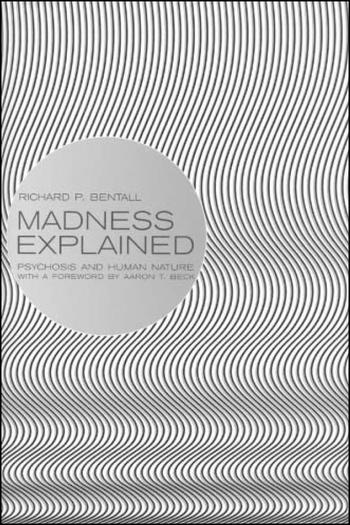
This is a maddening book. The author is determined to flatten the neo-Kraepelinians, as he calls them, with knock-down arguments that occupy the first 145 pages. He presents his fundamental principle in these words: ‘We should abandon psychiatric diagnoses altogether and instead try to explain and understand the actual experiences and behaviours of psychotic people’. But wait a minute, Bentall, isn't the term ‘psychotic’ a diagnosis? In addition to this obvious bloomer, he misunderstands the nature and present status of diagnosis in psychiatry. Terms such as ‘schizophrenia’, ‘mania’ and ‘anxiety disorder’, which rest entirely on patterns of symptoms, have the same status as did ‘dropsy’ in 19th-century medicine. Once the various causes of oedema were sorted out, dropsy as a diagnosis became redundant and disappeared. Oedema can result from problems in a number of different bodily systems, and even within a single system can be produced by different causes. There is no reason to think that the brain is any different from other bodily organs in this respect, although Bentall is sceptical that organic disease will ever be found to underlie psychiatric disturbances. He is entitled to his opinion, which is not based on evidence but on conviction, but there is no need to attempt to ‘offer a damning portrait of Kraepelinian psychiatry’, as he describes his efforts, in order to justify examining the psychological origins of individual symptoms. The two approaches are not mutually contradictory. If diagnostics were as rigid as he makes out, we would not already have been through four editions of DSM and ten of ICD.
In the middle section of his book, Bentall does a praiseworthy job of assembling and summarising the evidence for the psychological and psychosocial influences on the development of delusions, hallucinations, paranoid attitudes and other unusual modes of thought. This substantial chunk is worth reading, but just as you are warming to his ability to present diverse material from different disciplines, he vaults onto his hobby-horse and gallops off into a haze of half-truths and blinkered interpretations. One example from the last few pages will suffice: here, he quotes the evidence that non-White people living in White neighbourhoods are more likely to become psychotic than those surrounded by their own ethnic group. He concludes ‘Exposure to racial tension, it seems, can drive people mad.’ He cites no evidence for this (there is none), and he ignores other possible explanations such as lack of social support.



eLetters
No eLetters have been published for this article.